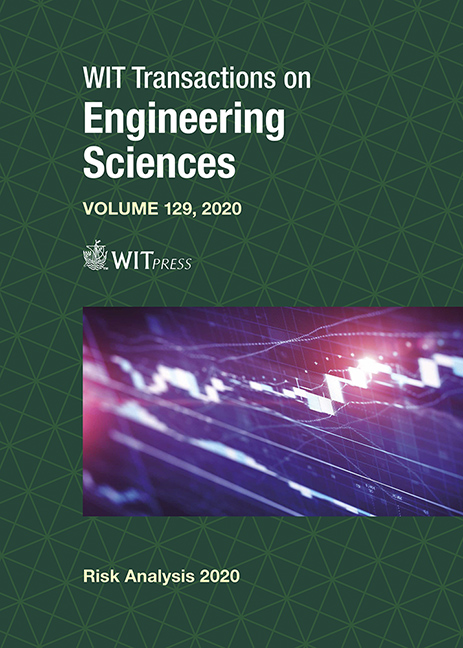EXPLOSIVENESS OF HYDROCARBON VAPOURS IN INDUSTRIAL INSTALLATIONS UNDER VARIOUS CONDITIONS
Price
Free (open access)
Transaction
Volume
129
Pages
11
Page Range
89 - 99
Published
2020
Size
1,091 kb
Paper DOI
10.2495/RISK200081
Copyright
WIT Press
Author(s)
JAN KARL, ELIŠKA FIŠEROVÁ, DANIEL MAXA
Abstract
Cleaning, maintenance and repair works in petroleum transport and storage equipment are activities connected with an increased risk of explosion. After the pipes and vessels have been emptied, residual amounts of flammable liquids can spontaneously evaporate into the equipment vapour space. To appraise the risk of explosion, it is necessary to assess the formation of an explosive mixture of hydrocarbons with air under various operating conditions. A device was designed that simulates the described system at a reduced scale under stationary conditions for which a vapour–liquid equilibrium is reached. The equilibrium gas phase was analysed to determine the influence of temperature, pressure, and initial liquid phase volume proportion on the lower explosion limit percentage value. The results of the experiments were compared with numerical calculations. Aspen HYSYS software was used for theoretical calculations of vapour–liquid equilibrium and estimation of the lower explosive limit percentage value. It has been confirmed that the concentration of flammable substances in the mixture increases with temperature. As expected, the concentration of flammable substances at a certain temperature decreased with increasing pressure, as the partial pressure of flammable substances remained approximately the same at elevated partial pressures of air. The prediction of the vapour phase composition based on equilibrium calculations in the process simulator provided a pessimistic estimate of the results with a higher hydrocarbon concentration than the experimental measurements. Since the theoretical estimate of the composition of the hydrocarbon-containing atmosphere was always on the “safe side”, it seems to be suitable for predicting the risk of explosion in industrial facilities under known conditions – temperature, pressure, composition and amount of flammable substance.
Keywords
explosive limits, hydrocarbon vapours, petroleum





